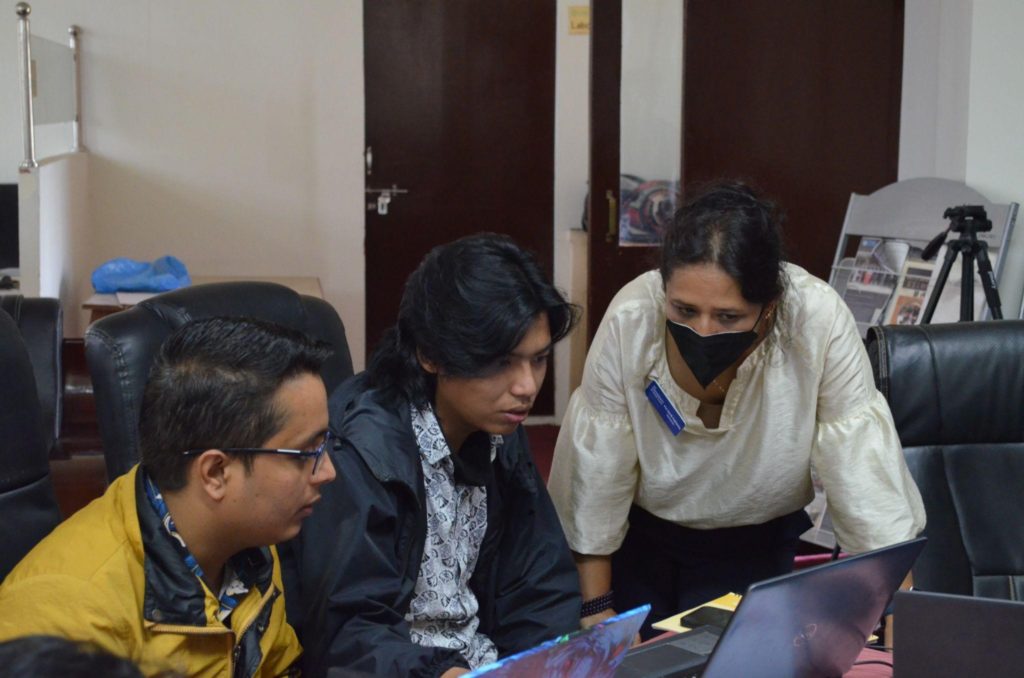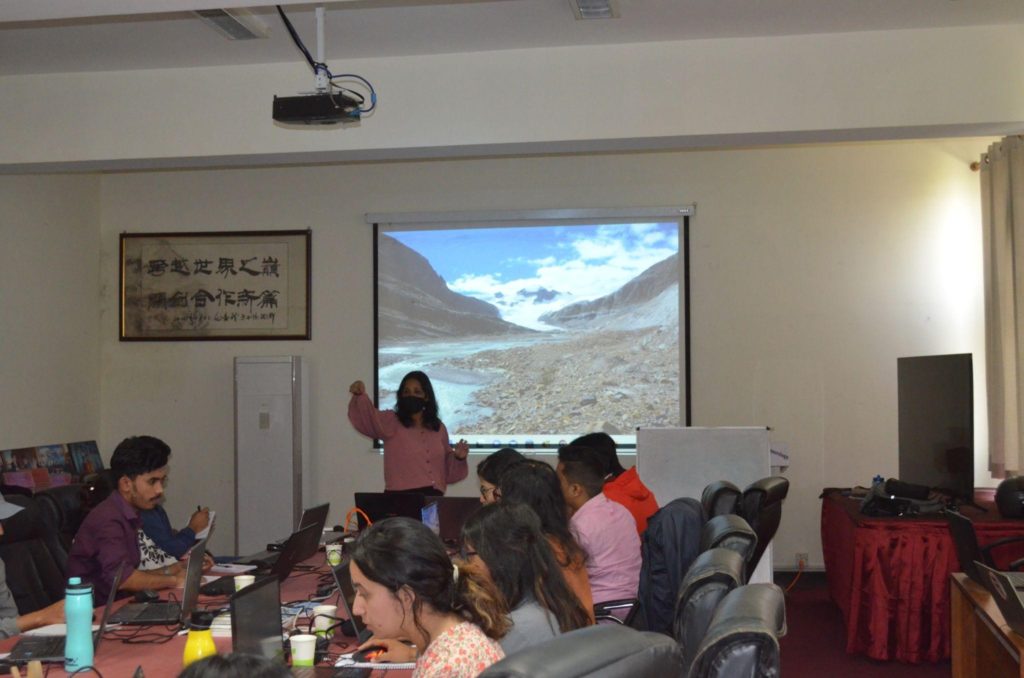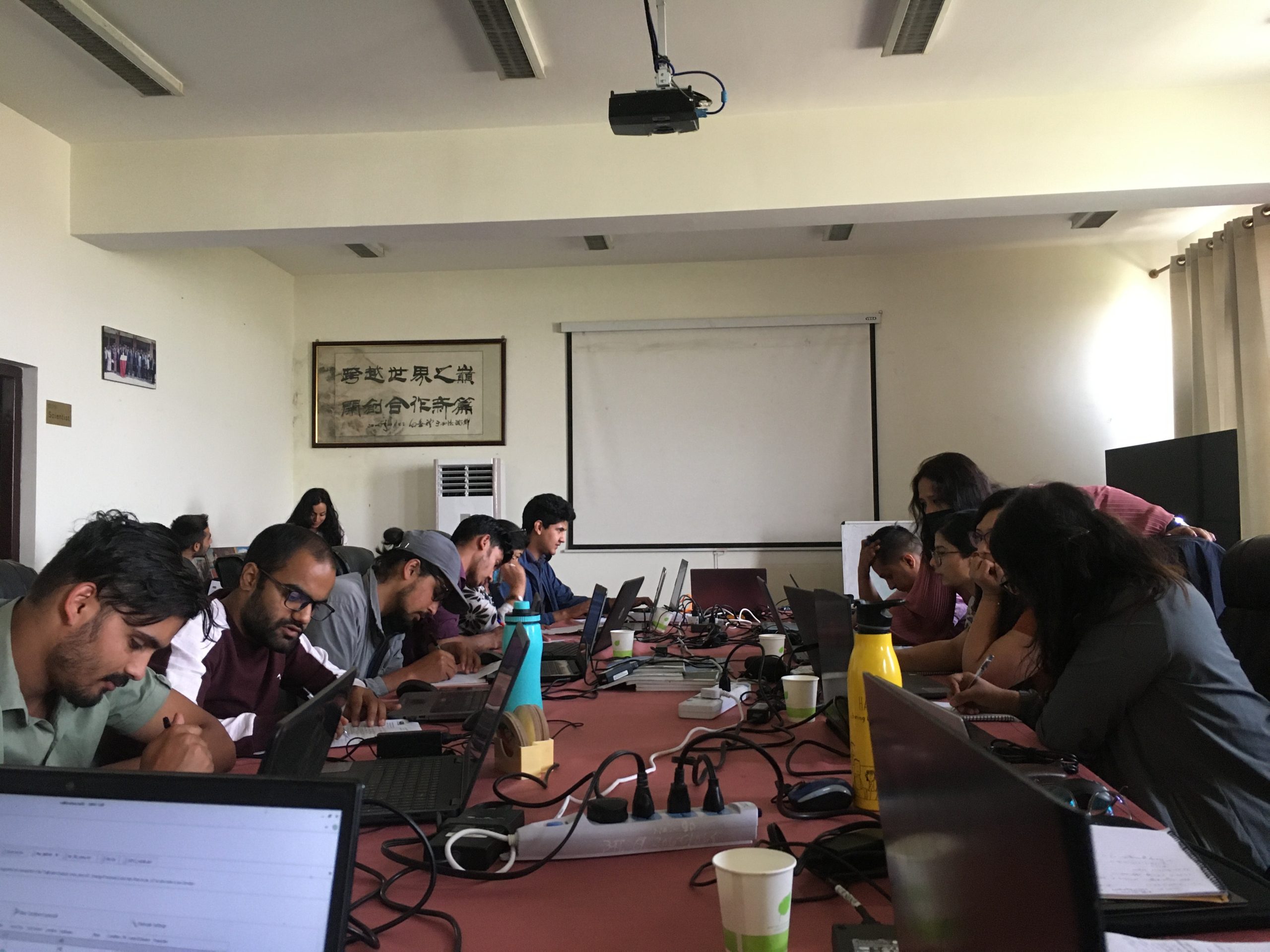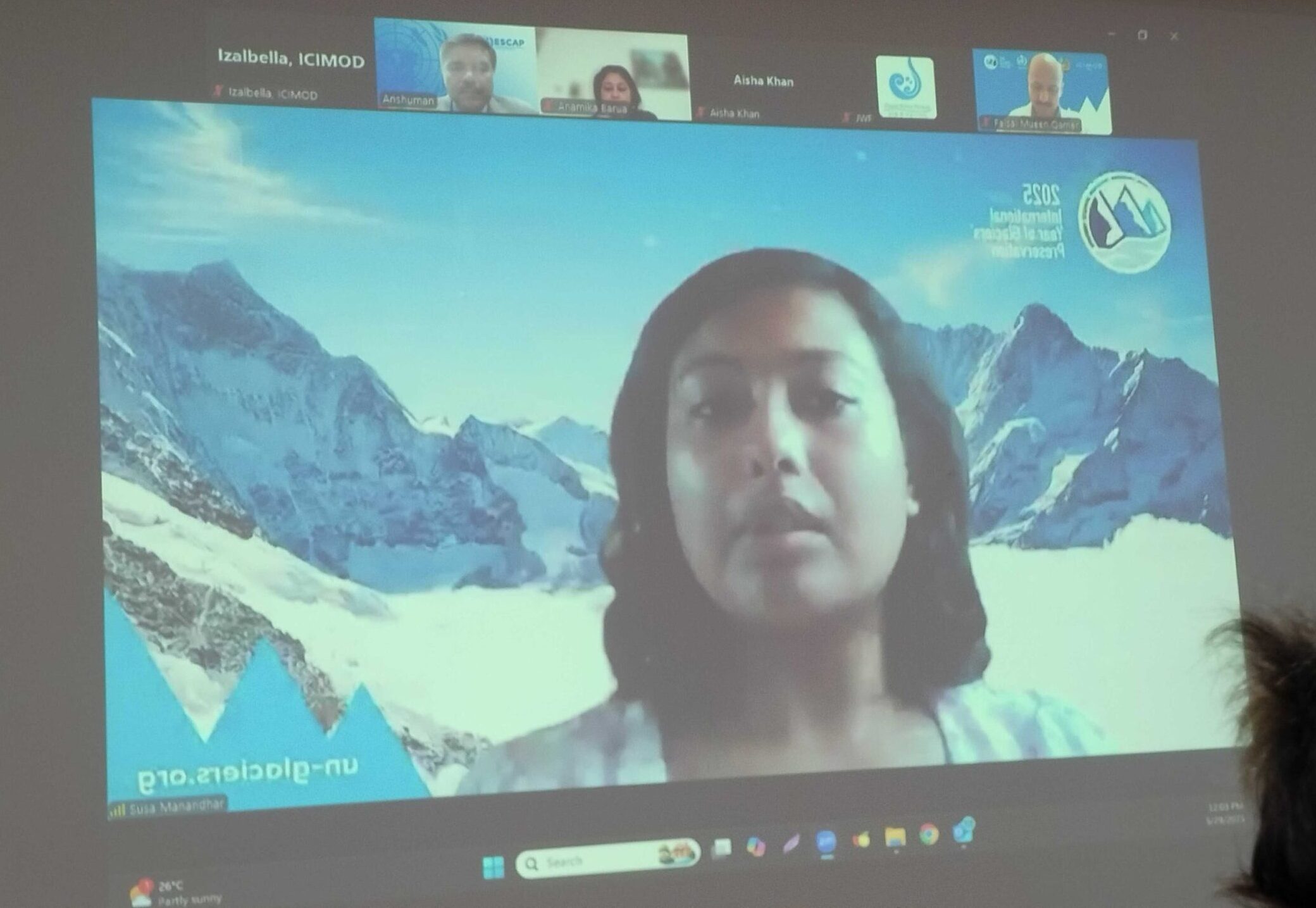The Small Earth Nepal (SEN) organized the ‘Second series of training courses in Hydrological Modeling’ from April 20-25, 2022 at the Central Department of Hydrology and Meteorology (CDHM), Tribhuvan University (TU), Kirtipur; in collaboration with the University of Rhode Island (URI), CDHM, and The Fulbright Specialist Program. The training was also a part of the project “Modeling Hydrological Response to Changes in Climate and Glacier in a Data-Scarce Glacierized Region in Nepal Himalaya” under the University Grant Commission (UGC) of Nepal.
The main objective of the course was to enhance the knowledge of hydrological modeling using SWAT with a view to capacitate graduate, undergraduate students, and early career professionals for carrying out hydrological research and projects. There were altogether 28 participants (11 female, 17 male) representing academic institutions, government and private agencies, NGOs, and research organizations.
The training program began with a welcome speech by Dr. Dhiraj Pradhananga (President, SEN; Assoc. Professor, Tribhuvan University) and Dr. Bhola Nath Dhakal (Executive Member, SEN; Head, Department of Geography, Ratna Rajya Multiple Campus, TU) who added statements on the scope of data modeling in science. The training instructors were Dr. Soni M. Pradhanang (Associate Professor, URI; Fulbright Specialist), Er. Pabitra Gurung (Adjunct Researcher, SEN), and Dr. Dhiraj Pradhananga. The course, in particular, covered core concepts of hydrology and modeling, water quality issues, cold region hydrology, and tools for research and communication in conjunction with hands-on exercises, and group works to further retain their understanding.
The training was complemented with guest speakers – Dr. Binil Aryal (Dean of Institute of Science and Technology, Tribhuvan University), Dr. Deepak Aryal ( Professor and Head of CDHM), Dr. Sunil Adhikary (Professor and Campus Chief of Trichandra Multiple Campus, Tribhuvan University). The training provided the participants with the necessary tools and concepts to carry out hydrological modeling.
Day 1 of the training was a general introduction to hydrologic modeling and modeling application using ArcSWAT program which ended with researcher Mrs. Anu Rai who gave a short presentation about Q-SWAT, its installation, and its pros and cons over Arc SWAT. The 2nd day of the training dealt with model preprocessing and model development where the trainees were taught to develop a hydrological model for New York using preprocessed data for that very location. The model had to simulate geographical parameters data for land-use pattern, soil composition and slope/elevation; and climatic parameters data for rainfall, relative humidity, wind speed, solar radiation and temperature. On the 3rd day trainees were taught to calibrate the model they created using the calibration application, SWAT-CUP 2012. The calibration tool used was Sufi-2. The calibrated model was analyzed on day 4.
During the closing sessions on the final day, the participants presented their curiosity regarding the issues while doing hydrological modeling. The most constructive feedback put forth by most trainees for the future was the potential for a training session for data processing rather than using preprocessed data. A session on ‘usable thoughts’ was led by Dr. Dhiraj Pradhananga. He also presented on the possible applications of hydrological models in Nepal and his experience in hydrological modeling in the Canadian Rockies. Dr. Pradhananga and Ms. Kajol Basnet (Research Assistant, SEN) also gave a joint presentation on reanalysis data products and the availability of open-source data in Nepal. The training was concluded gracefully with the certificate distribution by Drs. Soni M. Pradhanang, Dhiraj Pradhananga, Deepak Aryal and Sunil Adhikary.






